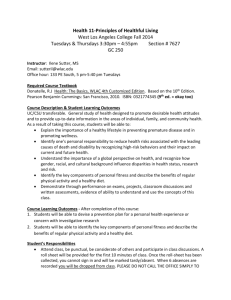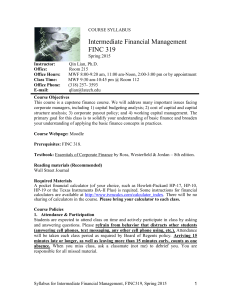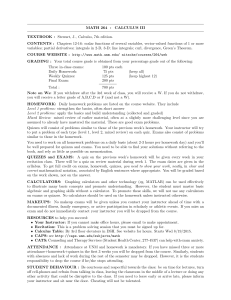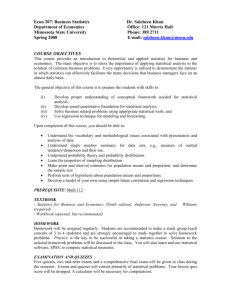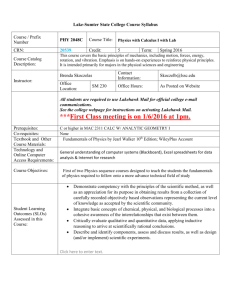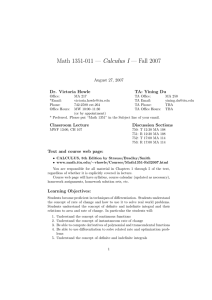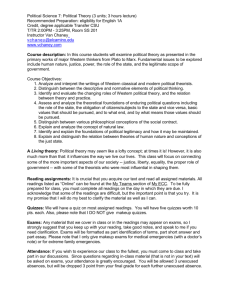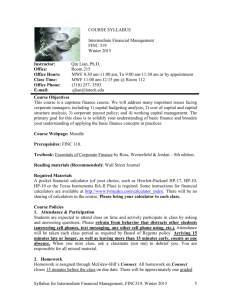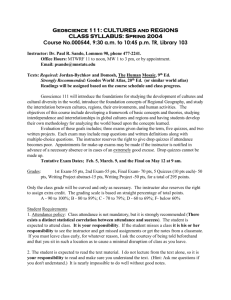Syllabus - Victoria College
advertisement
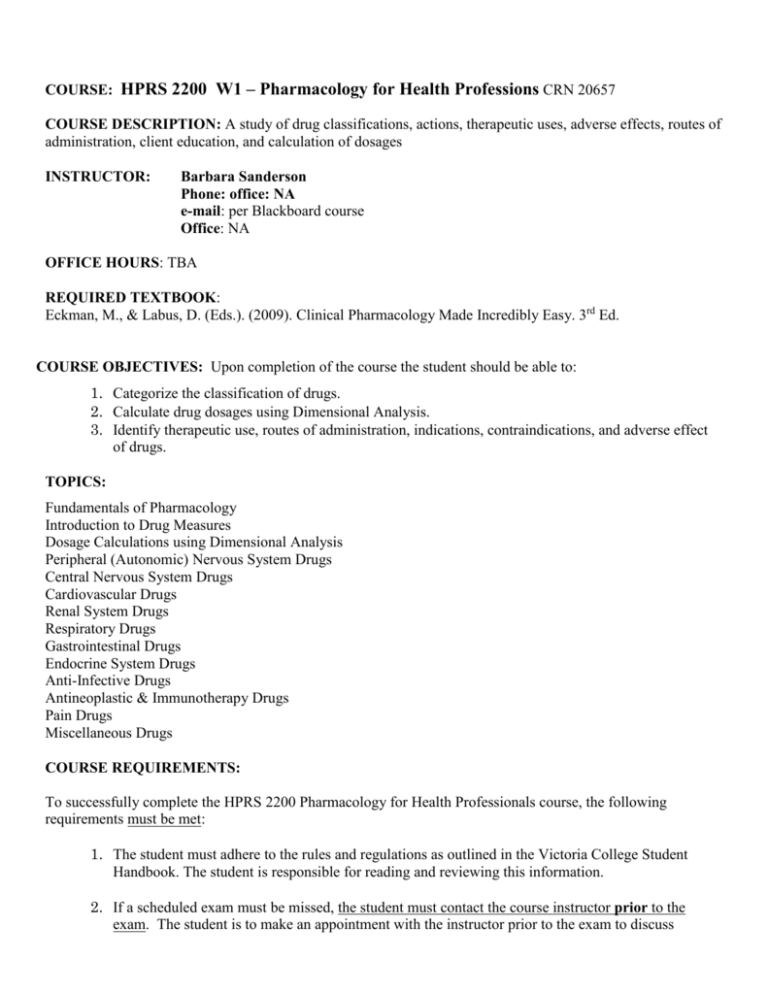
COURSE: HPRS 2200 W1 – Pharmacology for Health Professions CRN 20657 COURSE DESCRIPTION: A study of drug classifications, actions, therapeutic uses, adverse effects, routes of administration, client education, and calculation of dosages INSTRUCTOR: Barbara Sanderson Phone: office: NA e-mail: per Blackboard course Office: NA OFFICE HOURS: TBA REQUIRED TEXTBOOK: Eckman, M., & Labus, D. (Eds.). (2009). Clinical Pharmacology Made Incredibly Easy. 3rd Ed. COURSE OBJECTIVES: Upon completion of the course the student should be able to: 1. Categorize the classification of drugs. 2. Calculate drug dosages using Dimensional Analysis. 3. Identify therapeutic use, routes of administration, indications, contraindications, and adverse effect of drugs. TOPICS: Fundamentals of Pharmacology Introduction to Drug Measures Dosage Calculations using Dimensional Analysis Peripheral (Autonomic) Nervous System Drugs Central Nervous System Drugs Cardiovascular Drugs Renal System Drugs Respiratory Drugs Gastrointestinal Drugs Endocrine System Drugs Anti-Infective Drugs Antineoplastic & Immunotherapy Drugs Pain Drugs Miscellaneous Drugs COURSE REQUIREMENTS: To successfully complete the HPRS 2200 Pharmacology for Health Professionals course, the following requirements must be met: 1. The student must adhere to the rules and regulations as outlined in the Victoria College Student Handbook. The student is responsible for reading and reviewing this information. 2. If a scheduled exam must be missed, the student must contact the course instructor prior to the exam. The student is to make an appointment with the instructor prior to the exam to discuss scheduling of the missed test. A missed exam must be taken no later than the following week. Failure to take the exam at the arranged time will result in a “0”. The instructor has the option of giving an alternate exam. 3. Methods of Instruction will include: A. Reading assignments B. Power Point Presentations C. Online quizzes 4. Attendance is monitored in a variety of ways. Examples include weekly online quizzes and/or unit exams. Failure to log into a quiz or take the online exam will result in an absence. Four (4) absences may cause you to be dropped from the class. GRADING POLICY Grade Breakdown 1. There will be fours (4) unit exams (see possible points for each exam below), and a comprehensive final exam (possible 90 points) which consist of multiple choice and alternate format questions. 2. When a unit exam requires students to show dosage calculation work, students must use dimensional analysis (DA). Any work not in compliance with the DA rules and the Victoria College Rounding Policy will not be acceptable. 3. The Quiz assignments consist of a possible 60 cumulative points. It is the student's responsibility to confirm accurate grade posting of quizzes in the gradebook. Any APPEAL to a quiz grade posted in gradebook must be submitted by email to course instructor within 72 hours of quiz due date/time. Failure to APPEAL within this 72 hour period will result in grade standing as originally posted. 4. The following provides grades in relation to the cumulative total of points possible Cumulative Point/Grade Distribution by Exam: Exam I & II (15 + 35 pts) Exam III (50 pt) Exam IV (50 pts) A = 45-50 B = 40-44 C = 35-39 D = 30-34 F = Below 30 A = 90 – 100 B = 80 – 89 C = 70 - 79 D = 60 - 69 F = Below 60 A = 135 – 150 B = 120 – 134 C = 105 - 89 D = 90 – 104 F = Below 90 Quizzes (60 pt) A= 189-210 B= 168-188 C= 147-167 D= 126-146 F= Below 126 5. The Final Course Grade is determined by the total of points earned: a. Unit Exams b. Quizzes c. Final Exam (90 Questions/points) d. Total Possible Points FINAL (90pt) A = 270 – 300 B = 240 – 269 C = 210 - 239 D = 180 – 209 F= Below 180 150 pts. 60 pts 90 pts. 300 pts 6. A minimum of 210 points will be required to pass this course. DEVIATION FROM SYLLABUS: Deviation from the syllabus may become necessary for cause. Identification of cause is the prerogative of the program faculty. Students will be advised of any deviation in a timely manner to minimize any adverse effects on the learning process.
